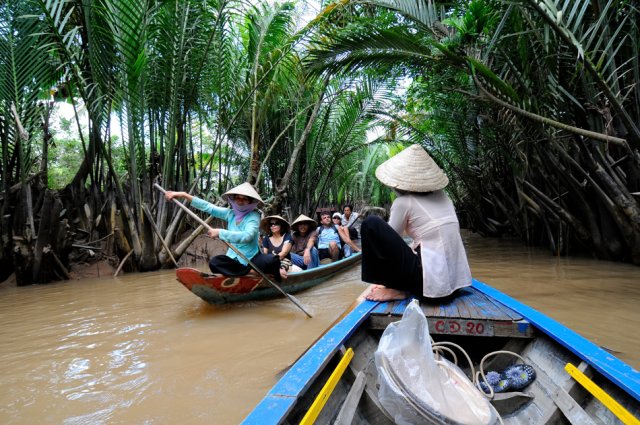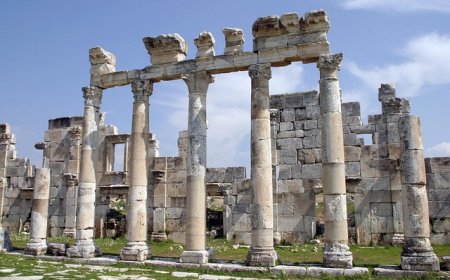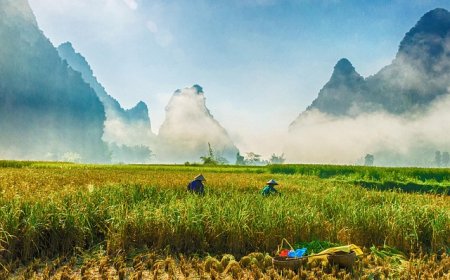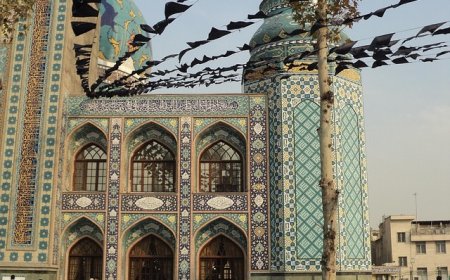Vietnam History, Culture, and Geography of a Resilient Southeast Asian Nation
Discover Vietnam for kids. Learn about rivers, mountains, and Vietnamese culture. Includes fun facts, vocabulary words, and a quiz.

🇻🇳Introduction
Vietnam is a long, narrow country in Southeast Asia, known for its beautiful landscapes, rich traditions, and resilient people. With mountains, rivers, rice fields, and busy cities, Vietnam is a land where nature and culture go hand in hand. Though Vietnam has faced many wars and hardships, it has grown into a modern and peaceful country that attracts visitors from all over the world.
Home to more than 100 million people, Vietnam offers a fascinating blend of ancient customs, colorful festivals, tasty foods, and a long history of survival and strength. From peaceful villages to busy cities like Hanoi and Ho Chi Minh City, Vietnam is full of stories waiting to be discovered.
Geography and Landscape
Vietnam is located on the eastern edge of the Indochina Peninsula, bordered by China, Laos, Cambodia, and the South China Sea. The country has a long S-shaped coastline that stretches over 2,000 miles. Its geography includes mountains in the north and west, flat deltas in the east and south, and forests that are home to many kinds of plants and animals.
Two major rivers shape life in Vietnam: the Red River in the north and the Mekong River in the south. These rivers create fertile deltas where people grow rice and vegetables. The Mekong Delta is especially important for farming, fishing, and transportation.
Vietnam has a tropical climate, with hot, humid summers and mild winters. Rainy seasons are important for crops but can also bring flooding. The landscape includes rice paddies, limestone cliffs, caves, and sandy beaches. One famous natural site is Ha Long Bay, known for its emerald waters and towering rock islands.
Cities and Regions
Vietnam’s two largest cities are Hanoi and Ho Chi Minh City, each with its own culture and history. Hanoi, the capital, is located in the north and known for its lakes, tree-lined streets, and ancient temples. It blends French-style buildings from colonial times with Vietnamese traditions.
Ho Chi Minh City, once called Saigon, is in the south and is Vietnam’s busiest city. It is filled with shops, tall buildings, street food vendors, and motorbikes. The city has modern neighborhoods as well as historic markets and war museums.
Other important cities include Da Nang, a fast-growing city near the coast; Hue, the former imperial capital with palaces and royal tombs; and Hoi An, a charming town known for its lantern-lit streets and old buildings. Each region of Vietnam has its own foods, dialects, and customs, making travel across the country an exciting cultural experience.
People, Language, and Culture
The people of Vietnam are friendly, family-oriented, and proud of their heritage. Most Vietnamese people belong to the Kinh ethnic group, but there are over 50 minority groups, each with their own traditions and languages. The official language is Vietnamese, which uses the Roman alphabet with accent marks that change the meaning and sound of words.
Traditional Vietnamese culture is influenced by Buddhism, Confucianism, and ancestor worship. Many people honor their ancestors with home altars and offerings of food, flowers, or incense. Respect for elders, harmony in relationships, and community cooperation are important values in everyday life.
Vietnam is known for its festivals and holidays, especially Tết, the Vietnamese Lunar New Year. Tết is the most important celebration of the year, when families clean their homes, wear new clothes, visit relatives, and share special foods. Streets are decorated with flowers and red banners, and fireworks light up the sky.
Vietnamese arts include silk painting, puppet shows, calligraphy, and traditional music. Today, modern culture in Vietnam also includes karaoke, pop music, video games, and online learning.
Food and Daily Life
Vietnamese food is healthy, flavorful, and often made with fresh herbs, rice, and vegetables. Meals usually include rice or noodles, along with meat, seafood, tofu, or eggs. Dishes are often flavored with fish sauce, lime, garlic, and chili.
One of the most popular dishes is pho, a noodle soup with beef or chicken, served with herbs and lime. Another favorite is banh mi, a French-inspired sandwich filled with meat, pickled vegetables, and spicy sauces, all inside a crunchy baguette. Spring rolls, either fresh or fried, are filled with shrimp, pork, or vegetables and dipped in peanut or chili sauce.
In daily life, families often eat meals together at low tables with chopsticks. Many children help their parents with chores and schoolwork. In cities, people travel by motorbike, bus, or bicycle. In the countryside, people live close to the land and grow rice, fruit, or vegetables.
Education is very important in Vietnam. Students wear uniforms and study subjects like math, literature, science, and history. Many children go to extra classes or tutoring after school. Technology is becoming more common in schools and homes, and many families use smartphones and computers daily.
History of Vietnam
Vietnam’s history is long and full of challenges. Thousands of years ago, it was home to farming villages and early kingdoms like the Van Lang and Au Lac. For over 1,000 years, Vietnam was ruled by China, which influenced its language, writing, and government.
In the 10th century, Vietnam regained independence and was ruled by Vietnamese dynasties for hundreds of years. During this time, cities were built, laws were written, and trade expanded. In the 1800s, Vietnam became a colony of France, and many people fought for freedom.
In the 20th century, Vietnam was divided into North Vietnam and South Vietnam, leading to the Vietnam War. The war was long and difficult, involving the United States and many other countries. In 1975, the war ended, and Vietnam was reunited as one country.
Since the 1980s, Vietnam has opened up its economy and grown rapidly. Today, it is a peaceful country with a young population and a bright future.
Nature and Environment
Vietnam is rich in natural beauty and wildlife. Its forests, rivers, and mountains are home to animals like gibbons, civets, elephants, and even rare pangolins. The country has more than 30 national parks and nature reserves, where visitors can hike, kayak, or learn about animals and plants.
One of the most famous sites is Phong Nha-Ke Bang National Park, which includes some of the largest caves in the world. The Son Doong Cave is so big that it has its own jungle and weather system inside!
Vietnam faces environmental challenges like air pollution, deforestation, and rising sea levels, especially in low-lying areas like the Mekong Delta. The government and local communities are working on eco-friendly farming, tree planting, and clean energy to protect nature.
Vocabulary List
| Word | Definition |
|---|---|
| Delta | Flat land where a river spreads into smaller streams, often good for farming |
| Ancestor | A family member from long ago, such as a great-great-grandparent |
| Pho | A Vietnamese noodle soup with broth, meat, and herbs |
| Tết | The Vietnamese Lunar New Year celebration |
| Mekong | A major river in Southeast Asia that flows through Vietnam |
| Pagoda | A temple or religious building, often with many levels |
| Motorbike | A small motorcycle often used for daily travel in Vietnam |
| Resilient | Strong and able to recover from difficult times or hardships |
👧🧒 Kid-Friendly Summary
Vietnam is a long, skinny country in Asia with mountains, rivers, and beaches. The people speak Vietnamese and enjoy fun festivals like Tết, the New Year celebration. They eat tasty foods like pho noodle soup, spring rolls, and banh mi sandwiches.
Vietnam’s big cities are full of motorbikes, markets, and temples. In the countryside, people grow rice in green fields. Even though Vietnam has been through hard times in the past, it’s now a peaceful place with lots of history, friendly people, and amazing nature.
🧠 Interactive Quiz: What Do You Know About Vietnam?
1. What is the capital of Vietnam?
A) Ho Chi Minh City
B) Da Nang
C) Hanoi
D) Hue
2. What is pho?
A) A type of rice
B) A noodle soup
C) A spicy drink
D) A dessert
3. What is Tết?
A) A harvest season
B) The Vietnamese New Year
C) A cooking tool
D) A school holiday
4. What large river flows through southern Vietnam?
A) Red River
B) Amazon River
C) Nile River
D) Mekong River
5. What do many people use for daily travel in Vietnam?
A) Cars
B) Horses
C) Motorbikes
D) Trains
6. What language do people speak in Vietnam?
A) Chinese
B) Thai
C) Vietnamese
D) Korean
7. What country ruled Vietnam as a colony in the 1800s?
A) Japan
B) France
C) Spain
D) Russia
8. What is one famous natural place in Vietnam?
A) Sahara Desert
B) Mount Everest
C) Phong Nha-Ke Bang National Park
D) Eiffel Tower




















































